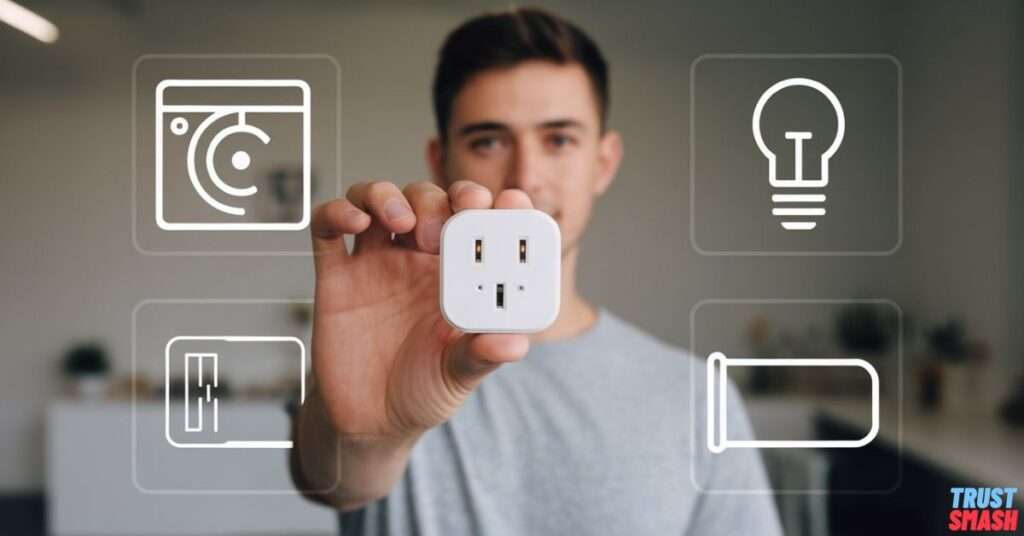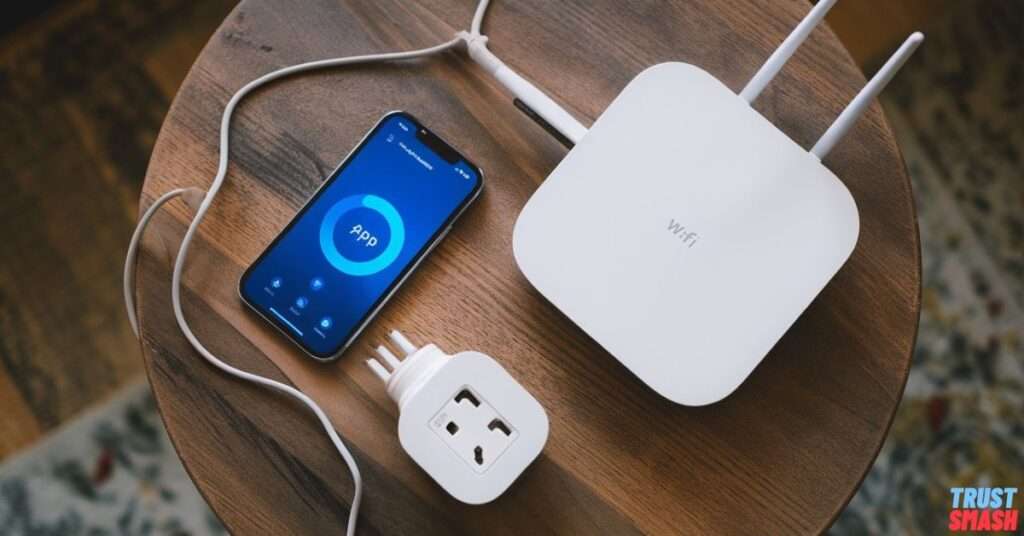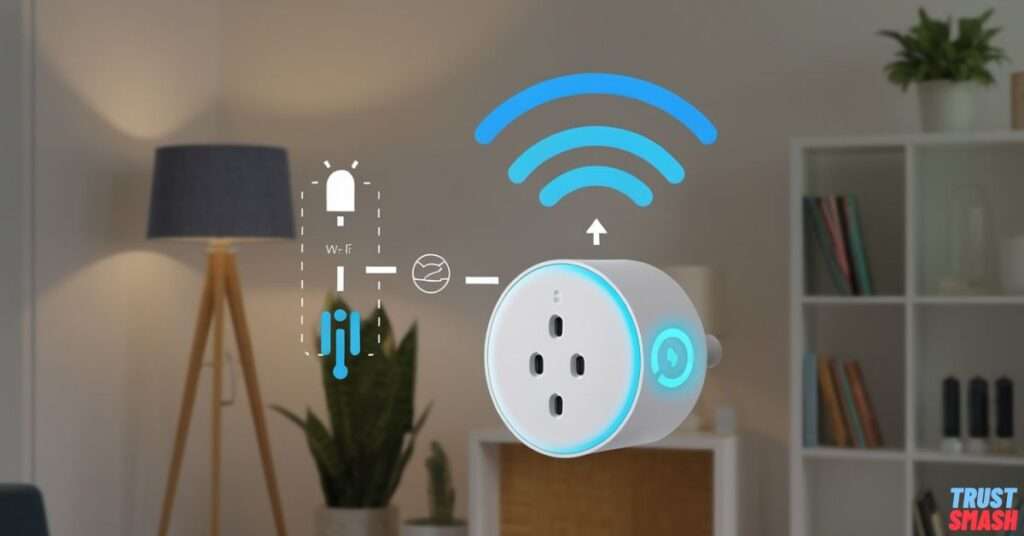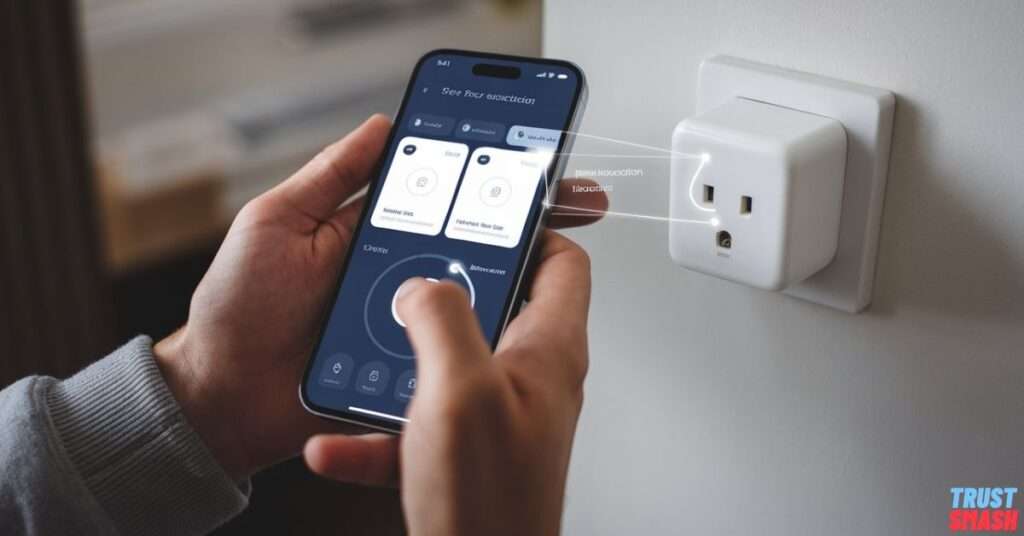Table of Contents
Beginner smart plugs setup is the perfect way to launch your smart home journey. It makes daily tasks easier and adds convenience from day one. In this guide, you will learn how to connect, control, and automate your devices using a smart plug. You’ll get clear explanations, safety tips, and product options ideal for the USA market.
What Is a Smart Plug and Why Beginners Love It

Beginner smart plugs setup starts with understanding what a smart plug actually is. A smart plug is a smart plug installation device that fits into a wall outlet and connects to your Wi‑Fi. It transforms any appliance into a smart device you can control using a mobile app automation system. Many people love this plug and play smart device because you don’t need complex wiring or hubs; it’s hassle‑free.
This home automation setup device works seamlessly with other smart home devices like Alexa or Google Assistant. That makes it a great choice for automation for beginners. You simply plug it in, connect via the app, and control your device from anywhere. That is remote appliance control made simple.
Beginner Smart Plugs Setup: What You Need to Get Started

For a smooth beginner smart plugs setup you’ll need just three things: a compatible plug, your smartphone, and a stable Wi-Fi socket. Use a TP‑Link Kasa setup if your plug is from TP‑Link, or the corresponding plug control app if it’s Meross, Wyze, or another brand. Make sure the plug supports no hub required plugs so you keep things simple.
Pick devices like a lamp or fan that draw low power to start. Verify the plug is labeled as an Alexa‑compatible plug or Google Assistant smart plugs so you can add voice control later. That helps you with voice assistant configuration in your smart home ecosystem.
How to Connect a Smart Plug with Wi-Fi in Minutes

Beginner smart plugs setup goes fast once you plug in the device. The smart plug usually blinks to show it’s ready. Then open the app and choose “add device” or smart device onboarding. Enter your home Wi‑Fi details and ensure you’re on the 2.4GHz WiFi smart plug band. Most smart plugs don’t support 5GHz networks, so this step matters.
When you follow the how to connect smart plug directions exactly, your device pairs quickly. The app shows when the plug configuration help process completes. You can test the connection right away. Use a name like “Desk Lamp” for easy voice control.
Step‑by‑Step Beginner Smart Plugs Setup Using Mobile App

Beginner smart plugs setup through the setup via mobile app takes only a few minutes. After scanning a QR code or selecting your plug model, the app guides you. It walks you through entering your Wi‑Fi password and syncing the plug. This app‑paired smart plug approach works even if you’re not tech‑savvy.
Once connected, test turning the device on or off from your phone. This “smart socket walk‑through” allows remote control socket use any time. It’s ideal as a smart device beginner tutorial, introducing you to plug scheduling setup later.
Common Mistakes During Beginner Smart Plugs Setup (And Fixes)
Some users experience issues during beginner smart plugs setup. A common error is connecting to a 5GHz network instead of 2.4GHz WiFi smart plug band. Another mistake is ignoring app permissions like Bluetooth or location. That stops pairing.
Check that your plug is not overloaded. Energy‑saving devices or heaters can exceed limits. If pairing fails, reinstall the plug control app or restart your router. Follow the new user plug instructions inside the app to resolve errors and complete setup correctly.
Best Smart Plugs for Beginners in 2025 Compared
Beginner smart plugs setup is easier when you choose the right plug. Here’s a comparison table of best smart plugs 2025 for USA customers:
| Smart Plug | Voice Support | Feature | Price (USD) |
|---|---|---|---|
| TP‑Link Kasa | Alexa, Google | Energy monitor plug setup | 18 |
| Meross Mini | Alexa, HomeKit | Compact smart plug | 20 |
| Wyze Plug | Alexa only | Plug scheduling setup | 15 |
| Amazon Smart Plug | Alexa only | Setup without hub | 25 |
| Govee Smart Plug | Alexa, Google | Surge‑protected smart plug | 22 |
Each of these offers a clean smart home for beginners experience. They require no hub and work with your chosen plug-in smart outlet style. Many support smart plug scheduler features and plug usage tracking for energy control.
Using Alexa or Google Assistant with Smart Plugs for Beginners
Voice control is a key benefit in your beginner smart plugs setup. To enable voice commands, open the Alexa or Google Home app and add the smart plug. Follow device pairing instructions exactly. After linking, say “Hey Google, turn off living room plug,” and it responds.
This voice-controlled plug setup is straightforward. It’s easier than flipping a switch. If you’re using an Amazon smart plug you can skip hub steps altogether. It makes smart home integration feel natural and powerful.
How to Schedule and Automate with a Smart Plug (Beginner Guide)
Setting up a schedule transforms your plug into a helpful tool. Inside the plug’s app, find the timer or scheduling section. Set rules like “turn off at 10 PM” or “on at sunrise.” These plug timers give you daily automation without extra devices. Automate lights, coffee makers, or fans.
Some apps allow automation scenes where multiple plugs act simultaneously. For instance, you can sync living room lights and fan every evening. These features stem from home automation setup and make your life easier and more efficient.
Beginner Smart Plugs Setup Safety Tips You Should Know
Safety matters with beginner smart plugs setup. Never use the plug with high‑wattage devices like air fryers or space heaters. Only use it for low‑power appliances. Check for UL or ETL certifications on safe power outlet listings. These ensure your plug is reliable.
Avoid placing plugs in damp areas. Indoor smart plugs are not waterproof. Stick to dry rooms. Don’t stack multiple plugs into a single outlet; it may cause overheating. Follow smart plug safety tips to keep your system secure.
Final Thoughts: Is Beginner Smart Plugs Setup Worth It in 2025?
With beginner smart plugs setup you unlock instant convenience and energy savings. This is a solid entry into smart electronics, remote appliance control, and IoT living. You can expand gradually into other IoT home devices once you’re comfortable.
Start small with one or two plugs. Explore features like voice control, scheduling, and energy tracking. Soon you’ll see how beneficial a smart home ecosystem can be. This is a practical, affordable, and future‑friendly step for smart home for beginners.
FAQs [FREQUENTED ASKED QUESTION]
How do I set up a smart plug?
To begin your beginner smart plugs setup, plug the device into a wall outlet and download the manufacturer’s app. Open the app, connect to your 2.4GHz Wi-Fi, and follow the on-screen instructions to sync the plug. Once paired, you can control it from your phone or voice assistant like Alexa or Google.
What are the easiest smart plugs to use?
The easiest smart plugs for beginners include the Amazon Smart Plug, TP-Link Kasa, and Meross Mini Plug. These offer simple app setups, no hub requirements, and quick connection to Wi-Fi. Their intuitive design makes them perfect for your first beginner smart plugs setup.
How to set up routine for smart plug?
Open the smart plug’s mobile app and find the “Schedule” or “Routine” option. From there, create automation rules—like turning off your fan at 10 p.m. or turning on your lamp at sunrise. Most beginner smart plugs setup apps offer step-by-step guides to make this super easy.
What do I need to use smart plugs?
For a successful beginner smart plugs setup, you’ll need three things:
A compatible smart plug
A smartphone with the plug’s official app
A stable 2.4GHz Wi-Fi connection
Optional: For voice control, you can connect the plug to a smart assistant like Alexa or Google Home.